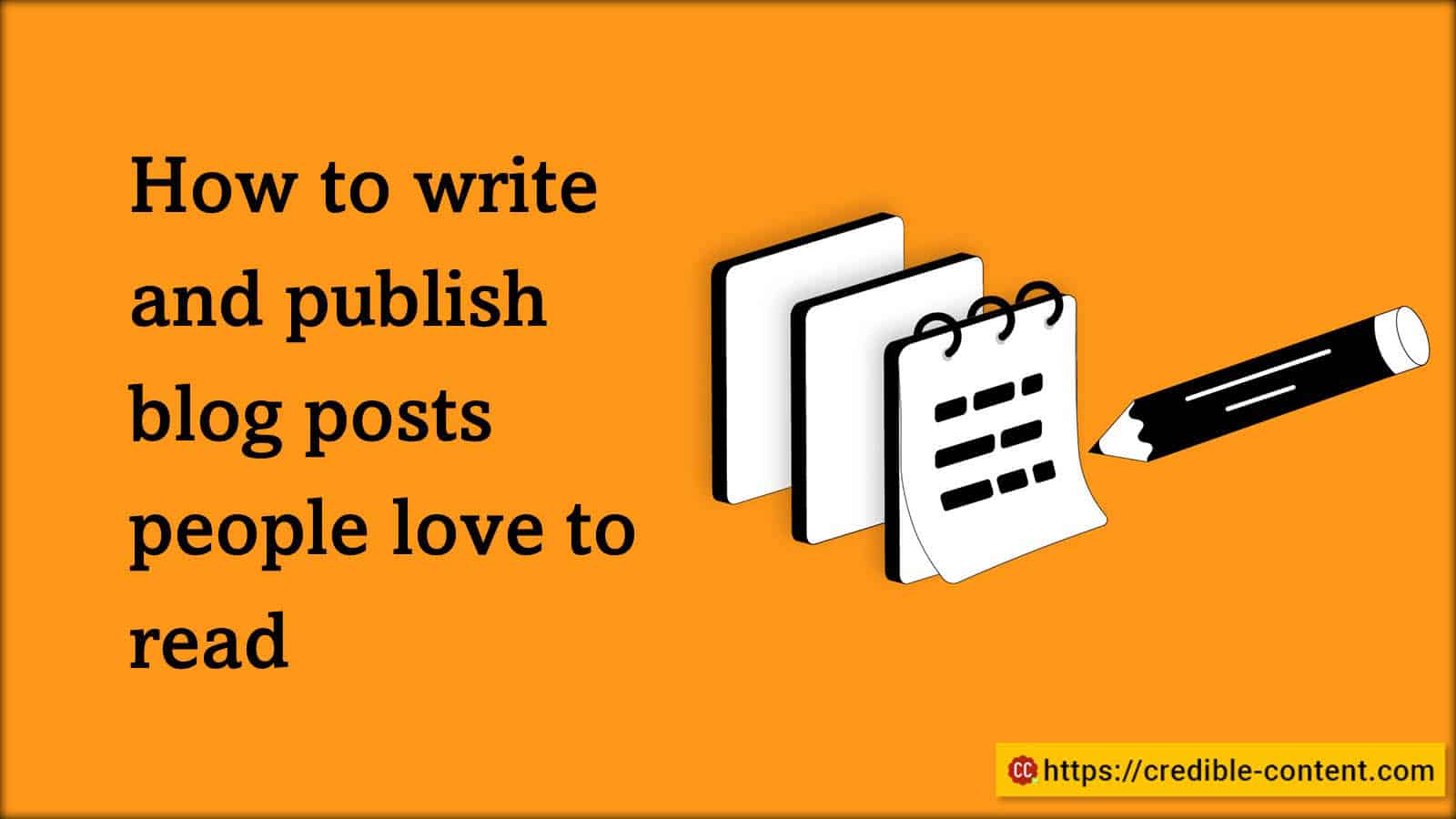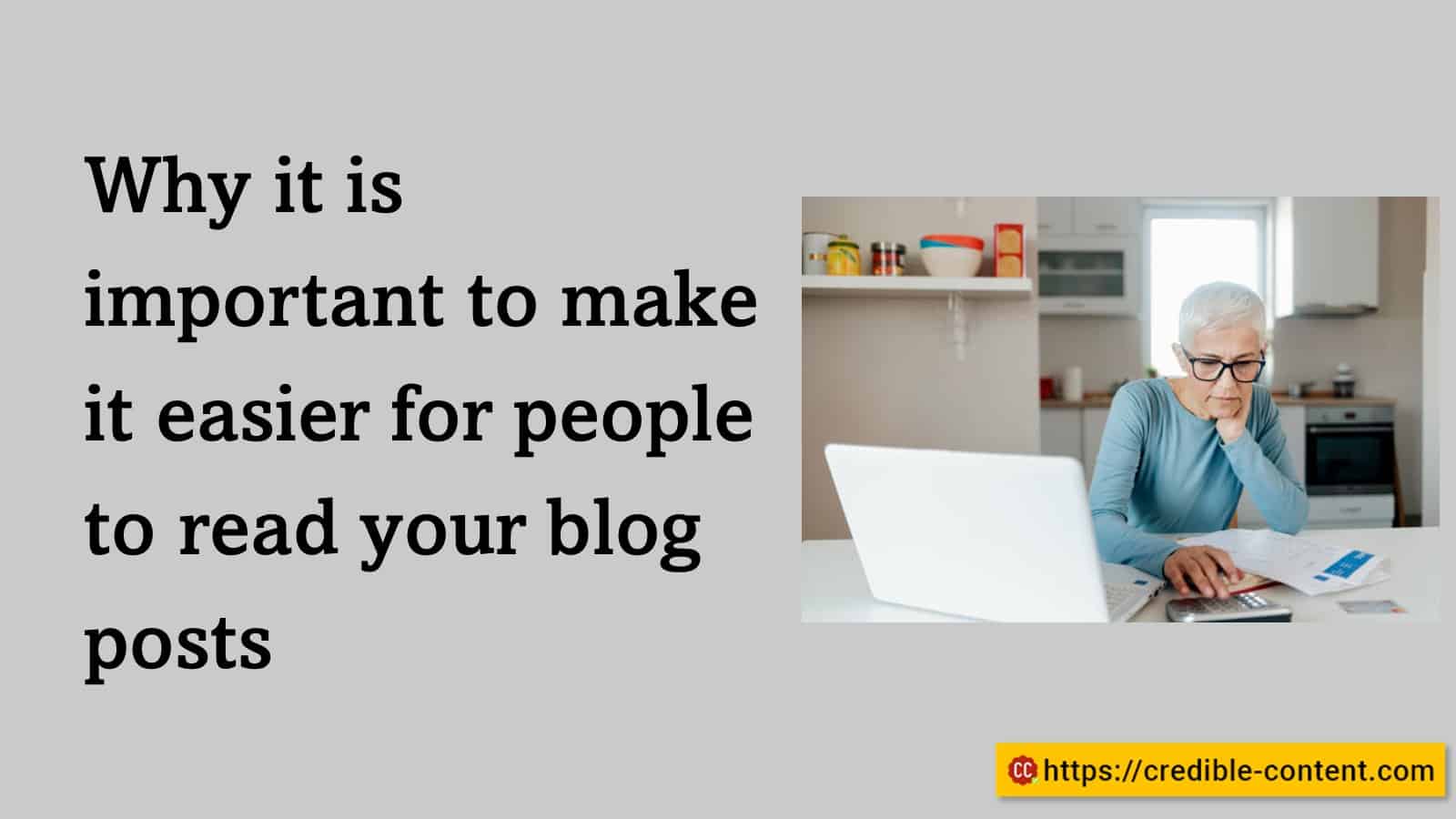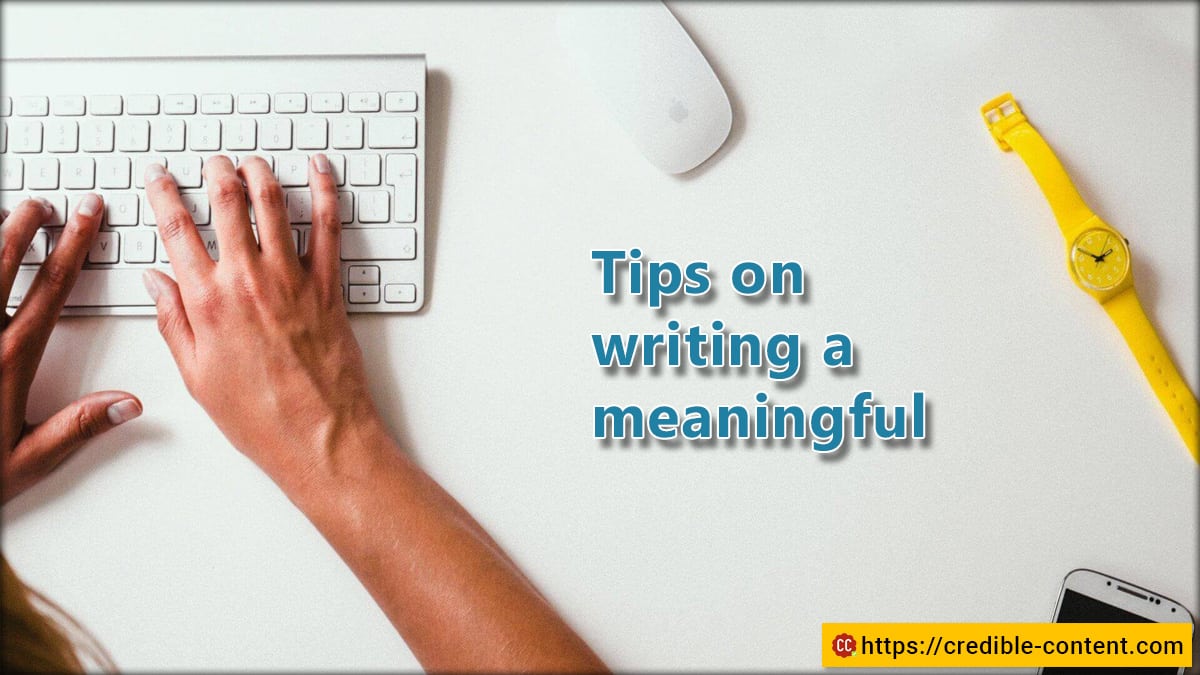You don’t write and publish your blog posts so that they can exist in a meaningless space just to improve your search engine rankings.
You want people to read them. Even your search engine rankings depend on people reading your blog posts.
If they don’t read, they don’t respond, they don’t convert, and they don’t share your content.
The Google algorithm knows when people do or don’t read your blog posts and accordingly it increases or decreases your rankings.
Here is the problem:
- 8 out of 10 people read just your headlines and nothing else.
- Average attention span on the Internet is down to 8 seconds from 12 seconds that it used to be a few years ago.
- 55% people coming to your blog spend less than 15 seconds on particular blog posts before moving on.
Why is it so? Why don’t enough people read your blog posts?
To understand why people don’t read your blog posts, introspect. Do you read every blog post you visit? How much of it do you read?
When was it that you completely read a blog post? Try to remember what the reason was. What compelled you to read the entire thing instead of quickly skimming or moving on to something else?
There was something that hooked you.
Did it entertain you? Did it give you information you need to solve a work related problem? Did it satisfy a strong ideological opinion you subscribe to? Was it a review you need to go through before purchasing expensive item?
15 Reasons Why You May Read a Blog Post With Great Interest
You may read a blog post for various reasons. Listed below are 15 compelling reasons why you may spend your time reading a blog post in its entirety. There is a reason why I have expressed all the ideas with subheadings and bulleted points (it makes the text scannable)
15 compelling reasons why you might read blog posts, written in a conversational tone:
1. Seeking Practical Information and Tips:
- You read blog posts to find practical information and actionable tips on various subjects.
- Blogs offer insights, hacks, and strategies that you can apply to your life.
2. Learning New Skills and Hobbies:
- You turn to blog posts to learn new skills or explore hobbies that interest you.
- Blogs provide step-by-step guides, tutorials, and resources to help you develop your interests.
3. Finding Inspiration and Motivation:
- When you need a dose of inspiration or a motivational boost, blog posts can be a great source.
- Blogs share stories, personal experiences, and uplifting content that resonate with you.
4. Solving Problems and Seeking Advice:
- Blog posts are your go-to for finding solutions to challenges you’re facing.
- Whether it’s troubleshooting technical issues or seeking advice on personal matters, blogs offer helpful insights.
5. Exploring Your Passions and Interests:
- You read blog posts to delve deeper into your passions and explore your interests.
- Blogs cater to specific topics, providing in-depth content and allowing you to immerse yourself in what you love.
6. Seeking Entertainment and Relaxation:
- Sometimes you just want to relax and enjoy engaging content, and blogs can provide that escape.
- Blogs offer entertaining stories, humorous articles, and enjoyable reads to help you unwind.
7. Staying Informed and Updated:
- Blog posts help you stay informed about the latest news, trends, and developments.
- Whether it’s industry insights, current events, or emerging ideas, blogs offer fresh perspectives.
8. Getting Product Reviews and Recommendations:
- Before making purchasing decisions, you rely on blog posts for genuine product reviews and recommendations.
- Blogs save you time and money by providing honest insights and helping you make informed choices.
9. Connecting with Like-Minded Individuals:
- Blog posts create opportunities for you to connect with others who share similar interests.
- Through comment sections and online communities, you can engage in discussions and build connections.
10. Personal Growth and Development:
- You read blog posts focused on personal growth to learn and develop different aspects of your life.
- Blogs offer self-improvement tips, advice on well-being, and strategies for achieving your goals.
11. Exploring Travel Destinations:
- If you’re passionate about travel, blog posts are a treasure trove of destination inspiration and travel tips.
- Blogs provide firsthand experiences, itineraries, and recommendations to help you plan your next adventure.
12. Gaining Professional Insights:
- Blog posts offer valuable insights and industry knowledge relevant to your professional growth.
- You read blogs to stay updated on trends, learn new skills, and gain perspectives from experts in your field.
13. Parenting and Family Guidance:
- As a parent or caregiver, you rely on parenting blogs for advice, tips, and support.
- Blog posts cover topics related to child-rearing, parenting challenges, and fostering strong family relationships.
14. Exploring Health and Wellness:
- Blog posts focused on health and wellness provide guidance on maintaining a balanced lifestyle.
- You read blogs to find tips on fitness, nutrition, mental well-being, and self-care practices.
15. Enjoying Thought-Provoking Content:
- Blog posts often delve into thought-provoking subjects, sparking intellectual curiosity.
- You enjoy reading blogs that offer unique perspectives, deep insights, and engaging discussions.
Why is it important to make it easier for people to read your blog posts?
Listed below are some important reasons.
Enhanced User Experience:
- When you make your blog post easier to read, you improve the overall user experience for your readers.
- They can navigate through your content smoothly, find information effortlessly, and stay engaged longer.
Increased Engagement:
- Easier-to-read blog posts tend to capture and hold readers’ attention.
- By presenting your content in a reader-friendly manner, you encourage readers to engage with your post, leave comments, and share their thoughts.
Improved Comprehension:
- When you make your blog post reader-friendly, you help readers better understand and grasp your message.
- Clear language, concise paragraphs, and logical flow contribute to improved comprehension.
Higher Retention:
- By optimizing readability, you increase the chances of readers remembering and retaining the information you provide.
- This can lead to a stronger impact and a higher likelihood of them returning to your blog for future content.
Better Accessibility:
- Making your blog post easier to read ensures that it is accessible to a wider audience.
- Consider using legible fonts, appropriate font sizes, and sufficient contrast to accommodate readers with visual impairments or reading difficulties.
Enhanced SEO:
- Search engines value reader-friendly content, as it aligns with their goal of providing valuable information to users.
- By optimizing your blog post for readability, you improve its chances of ranking higher in search engine results, increasing visibility and organic traffic.
Increased Social Sharing:
- Reader-friendly blog posts are more likely to be shared on social media platforms.
- When your content is easy to read and understand, readers are more inclined to share it with their networks, expanding your reach and driving more traffic to your blog.
Establishes Credibility:
- When you present your content in a clear and organized manner, it enhances your credibility as a knowledgeable source.
- Reader-friendly blog posts reflect professionalism and expertise, building trust with your audience.
Encourages Repeat Visitors:
- When readers have a positive reading experience on your blog, they are more likely to return for more.
- By consistently making your posts reader-friendly, you create a loyal readership and foster a sense of community.
Better Time-on-Page:
- When readers find your blog post easy to read, they are more likely to spend more time on your page.
- This increased time-on-page signals to search engines that your content is valuable and engaging.
Reduces Bounce Rate:
- Reader-friendly blog posts help reduce bounce rates, as readers are more likely to stay on your page and explore further.
- Engaging content, clear headings, and a well-structured layout keep readers interested and encourage them to click through to other posts.
Builds Authority in Your Niche:
- By consistently publishing reader-friendly content, you establish yourself as an authority in your niche.
- Readers recognize your expertise and are more likely to seek your blog as a go-to resource for reliable information.
Enhances Mobile Experience:
- With the increasing number of users accessing content through mobile devices, optimizing readability for mobile screens is crucial.
- Reader-friendly blog posts adapt well to different screen sizes, ensuring a seamless experience for mobile readers.
Supports Skimming and Scanning:
- Reader-friendly blog posts make it easier for readers to skim and scan the content.
- Clear headings, bullet points, and concise paragraphs enable readers to quickly find the information they need, improving overall usability.
Promotes a Positive Brand Image:
- Making it easier for people to read your blog post demonstrates that you value your audience’s experience and respect their time.
- This fosters a positive brand image, making readers more likely to engage with your content, trust your brand, and become loyal followers.
Investing time and effort into optimizing readability pays off by providing a better experience for your readers, increasing engagement, and driving the success of your blog.
Some key ways you can make it easier for your readers to read your blog posts
Making your blog post reader-friendly is crucial because it directly affects the overall user experience and engagement.
When you visit a blog, you want to find content that captures your attention, keeps you interested, and provides value, right? Well, your readers are no different.
Think about it this way: when I land on a blog post, I want to be able to quickly skim through it and get a sense of what it’s about.
If it’s a massive block of text without any breaks or headings, it becomes overwhelming and discouraging for me to even start reading it.
But if the post is well-structured, with clear headings, subheadings, and paragraphs, it becomes much more inviting.
When you make your blog post reader-friendly, you’re essentially making it easier for me, your reader, to consume the information.
You’re organizing your thoughts and presenting them in a coherent manner. This allows me to grasp the main points, follow your arguments, and understand your message.
Another aspect of reader-friendly blog posts is using a conversational tone. Just like we’re having this conversation right now, when I read a blog post, I want to feel like I’m having a friendly chat with the writer.
If the language is too formal or technical, it creates a distance between you and me, making it harder for me to connect with the content.
By using a conversational tone, you can establish a more personal connection with your readers.
It helps you relate to them on a deeper level and makes the reading experience more enjoyable. It’s like having a knowledgeable friend sharing valuable insights or information with you, rather than a dry and impersonal textbook.
Here are 20 ways you can make blog posts reader-friendly.
1. Clear and Concise Writing:
- Use simple and straightforward language to make your blog post easy to understand.
- Avoid jargon or complex terminology that may confuse readers.
2. Use Subheadings:
- Break your blog post into sections with descriptive subheadings.
- Subheadings help readers navigate your content and find specific information quickly.
3. Short Paragraphs:
- Keep your paragraphs short and focused.
- This makes it easier for readers to digest the information and prevents overwhelming blocks of text.
4. Utilize Bullet Points and Numbered Lists:
- When presenting lists or key points, use bullet points or numbered lists.
- This format makes information more scannable and helps readers grasp important details.
5. Incorporate Relevant Images:
- Use visually appealing images that complement your content.
- Images break up the text, make your blog post more engaging, and aid in conveying your message.
6. Write in a Conversational Tone:
- Imagine you’re having a conversation with a friend while writing.
- Using a conversational tone helps establish a connection with your readers and keeps them engaged.
7. Highlight Key Information:
- Use bold or italic formatting to emphasize important words or phrases.
- This draws readers’ attention to essential points and improves readability.
8. Break up Text with Subheadings:
- Break your content into smaller sections with clear subheadings.
- This allows readers to skim through the post and find what they’re looking for more easily.
9. Incorporate Relevant Examples:
- Use real-life examples or case studies to illustrate your points.
- Examples make your content relatable and help readers understand complex concepts.
10. Provide Clear Transitions:
- Use transitional words and phrases to guide readers through your blog post.
- Smooth transitions help maintain a logical flow and improve overall readability.
11. Use a Readable Font:
- Choose a font that is easy to read on both desktop and mobile devices.
- Sans-serif fonts like Arial or Verdana are often a good choice for online content.
12. Include White Space:
- Leave ample white space between paragraphs, images, and other elements.
- White space helps readers focus on the content and improves overall readability.
13. Break up Text with Block Quotes:
- Use block quotes to highlight important quotes or key insights.
- Block quotes provide visual breaks and draw attention to significant information.
14. Add Relevant Headings and Subheadings:
- Use descriptive headings and subheadings throughout your blog post.
- Headings help readers understand the structure of your content and locate specific information.
15. Write Short Sentences:
- Keep your sentences concise and avoid excessive length.
- Short sentences are easier to read and understand, improving the overall flow of your blog post.
16. Provide a Table of Contents:
- For longer blog posts, include a table of contents at the beginning.
- This allows readers to jump directly to the sections they’re most interested in.
17. Use Call-to-Action (CTA) Buttons:
- Incorporate clear and compelling CTA buttons within your blog post.
- CTAs encourage readers to take desired actions, such as subscribing, sharing, or commenting.
18. Add Relevant Links:
- Include links to external sources or related articles within your blog post.
- This provides readers with additional resources and enhances their understanding of the topic.
19. Proofread and Edit:
- Ensure your blog post is free from grammatical and spelling errors.
- Proofreading and editing improve the professionalism and readability of your content.
20. Encourage Feedback and Interaction:
- Conclude your blog post by inviting readers to share their thoughts or ask questions.
- Encouraging interaction creates a sense of community and helps build relationships with your audience.
Remember, making your blog posts reader-friendly enhances the overall user experience, improves engagement, and keeps your readers coming back for more.
Ultimately, making your blog post reader-friendly enhances the chances of your message being understood, appreciated, and shared.
It helps you build a loyal readership, encourages people to spend more time on your site, and increases the likelihood of them returning for more.
So, whether you’re writing about your passion or promoting a product or service, remember that a reader-friendly blog post is the key to engaging and retaining your audience.







